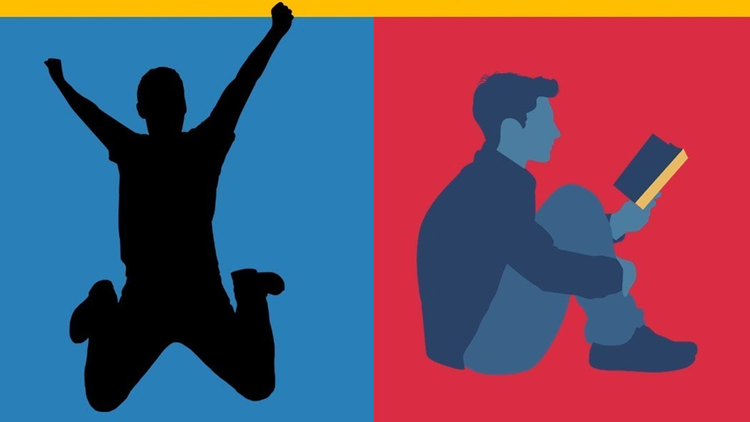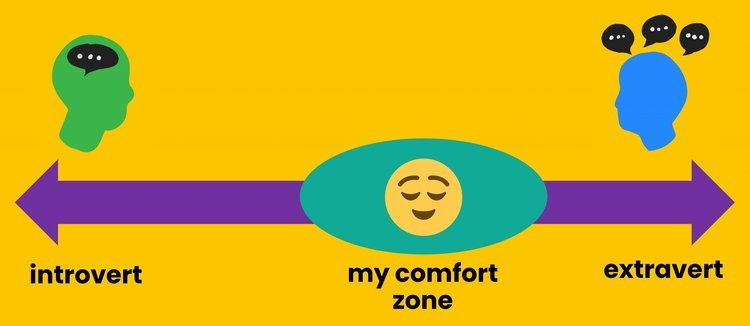Based on the talk, How (Not) to be Lonely in the 21st Century - see more or book for your team or organisation here.
The theme for this year’s Mental Health Awareness Week is Loneliness – an issue that seems to be impacting many of us, in a world, ironically, so hyper-connected.
In preparing for the week, I couldn’t help but reflect on my own experiences with loneliness and connection. And, while I consider myself to be a generally sociable person, privileged to have friends and family I can call upon when I need, it made me realise that, at times - I’ve been kinda lonely.
When I look back over my life, I’ve had times I've felt disconnected, in various different ways. The isolation of my lockdown, for example, was compounded by living and working alone, single, which brought its own challenges. Before then, I'd lived and worked in different places, which made friendship groups and “tribes” difficult to maintain.
But interestingly, there have also been times I’ve been surrounded by people, or in a relationship, yet still felt disconnected - because it was a distraction and avoidance from being alone, and more connected with myself.
Of course, there are people experiencing seemingly far more harrowing and severe loneliness than how this may sound. But the reality is, loneliness can take all kinds of forms. It is a feeling - a human emotion, which we can all experience to some degree. Like all feelings, it can last for a moment or a lifetime, depending on how we respond to it.
An ambivert’s guide
Loneliness and connection can mean completely different things to different people. In the 1920’s, the psychiatrist, Carl Jung, promoted the concept of introversion and extraversion (or extroversion) – the two commonly known, polar opposite personality types, which describe our individual desire for social interaction.
In the context of loneliness, an introvert, for example, is said to be more comfortable with their own company than an extrovert is; while an extrovert is living its best life while surrounded by others. Or, as the author, Susan Cain, puts it, “Introverts prefer lower-stimulation environments. That's where they feel at their most alive. Whereas extroverts really crave stimulation in order to feel at their best.”
But it’s worth considering that Carl Jung, himself, claimed there’s no such thing as a pure introvert or extrovert. Since then, others such as Hans Eysenck have gone on to coin the term ambivert – somebody who embodies the traits of each – while Katharine Cook Briggs and Isabel Briggs Myers have explored the scale of introversion and extroversion; one on which we all sit, between preferring our own company, smaller social groups and lower stimulation; or other people’s company, large groups and high stimulation.
Reflecting on my own experiences, I couldn’t help but feel there’d been times I’d swung the pendulum to each end of that scale. That I have a comfort zone, around which, too little connection and stimulation could bring loneliness, while too much of the wrong connection could do the same. And, since we’re technically all ambiverts, perhaps it’s something we could all consider.
Loneliness has been chosen for this year’s MHAW theme, because it’s a growing issue for many and can have numerous consequences – not only on individuals, but in society at large.
We are social animals, evolved to be around other humans as part of our survival over millions of years. It is core to being human – to a point where research has shown that loneliness can come from not getting enough of the right connection, in the same way that hunger can come from not getting enough food.
So, just as we listen to our hunger and even plan our lives around it, perhaps we should listen to our loneliness and put more thought into how, where and when we make sure to get the connection we need.
With this in mind, here are my thoughts – and three things I’ve learned on my journeys between connection and disconnection.
1) Loneliness – and connection – can take many forms
As discussed, different people can feel lonely – or connected – in different ways. Some people might feel more connected with large groups, others in a deep-and-meaningful one-to-one, others enjoying valuable “me-time”.
But we all live in a society where any of these connections are possible, and we can all find connection in each of them. In order to see how we might, I’ve broke these areas down into the following:
Casual connection: While simply being around other humans might not be entirely enough for us to feel truly connected, interacting and having people around has been shown to have a positive impact on wellbeing; whether breaking out of WFH into a shared workspace, or reaching out to neighbours to know there are people around.
Belonging connection: In recent years, authors and researchers such as Brene Brown and Johann Hari have highlighted the importance of being part of something bigger than oneself. Joining a class, online or in-person, or making an effort to bring close friends or family together, can provide a feeling of security and oneness.
Close connections: While being surrounded by others can reduce our feelings of loneliness, having individuals we can call upon in times of need, around whom we can be ourselves, is one of the most important connections we can have. Equally, having someone with whom we can share some kind of meaning – like a shared hobby or interest – can help to bring meaning and purpose to a looser connection.
Self connection: Our ability to enjoy our own company, can often be the difference being alone and being lonely. While it’s important for us to have social connection, it’s also better to be alone than in relationships that are toxic or otherwise – as this long running study on happiness from Harvard University, has shown.
Each area might be more important to some than it would be to others. And, in becoming aware of them, we might find it easier to see where we, as individuals, get our energy and feeling of connection – or, where we might look to have more.
2) Own Your Lonely: Make it a quality connection, or disconnect
The more comfortable we can be in each of the above areas, the more chance we have of feeling connected, instead of disconnected. But equally, as per the above Harvard study, the connection has to be quality – as in, its ability to make us feel truly happy.
For example, spending time alone, whether an introvert or extrovert, can become lonely, depending on the quality of the time we spend in it – and the thoughts we attach to it. Equally, spending time with other people can become lonely, depending on the how we spend that time and who with.
So, the approach I’ve learned to take, is to “Own your lonely”. If spending time alone, it should be spent in a way that feels good. For example, while scrolling through other people’s Instagram stories or endless Netflix options can become draining, engaging in meaningful, challenging activities has been shown to reduce feelings of loneliness. Just as, using that time to better understand yourself and your passions can lead to connecting with others who have the same.
Equally, another finding in the Harvard study is that the quality of our relationships are more important than the quantity – despite what our Facebook friend count might tell us. If spending time with others, it should ideally be spent with people who feel good to be around, or engaging with them in activities that have the same effect.
3) It’s worth pushing the comfort zone to get the right connection
As well as enjoying the connection that comes most naturally to us, expanding our comfort zone into the areas that don’t, can increase our chances of feeling more connected.
If we imagine that our comfort zone is a bubble, which expands or contracts, depending how close we stand to its edge; then, over the past couple of years, being sat in our homes, directly in the middle of that comfort zone, has got many of us reluctant to move outside of it.
I’d become very comfortable in my home. I was working at home, doing exercise at home, and generally enjoying all the technological innovations that lockdown had created, to make being at home as comfortable as possible.
But all these innovations aren’t necessarily quality “me-time”, but distractions, which allow us to avoid some of the difficult feelings that can result in more positive ones. For example, in avoiding the feelings that might come with commuting, or the flutter of nerves we might get from going out and meeting new people, we forfeit some of the abundance of positive feelings that come with social connection.
The joy of discomfort
On the introvert-extrovert scale, we ambiverts each have our own comfort zone. The more extroverted may not like the thought of their own company, while those leaning introvert might find the thought of being around others to be one to avoid.
But on the other side of our comfort zone walls is an abundance of opportunity for connection and happiness. And, while attempting to blast our way out of it may not be advised, starting to dance around the edge of our comfort zone can not only get us what we really want and need, but will expand that zone to feel more comfortable in previously uncomfortable situations.
For somebody who finds it difficult to spend time alone, planning a big night in or spending quality time indulging in passions or interests can unlock a whole new side of connection. For those struggling to connect with others, trying to find ways to reach out – perhaps by reconnecting with friends or taking steps to meet new people, in classes or groups, online or in-person, may help to reduce any feelings of loneliness and increase those of connection.
Pushing the edge of the comfort zone has to be done at a pace that works for us, personally. And moving into any of the above four areas, in which we might not feel comfortable, can feel daunting and take time. But equally, feeling more connected and happy in any of them, by improving the quality of the time we spend in them, can not just make it more enjoyable, but also easier to expand into the others.
After all this time of sitting in the middle of our comfort, we can easily trick ourselves into thinking it’s better to stay there. But comfort zones are never fixed. So maybe now could be the perfect time to start giving it a little push towards the connection we all need to feel good. It might help us, as individuals, to feel more connected – and even help others along the way.


